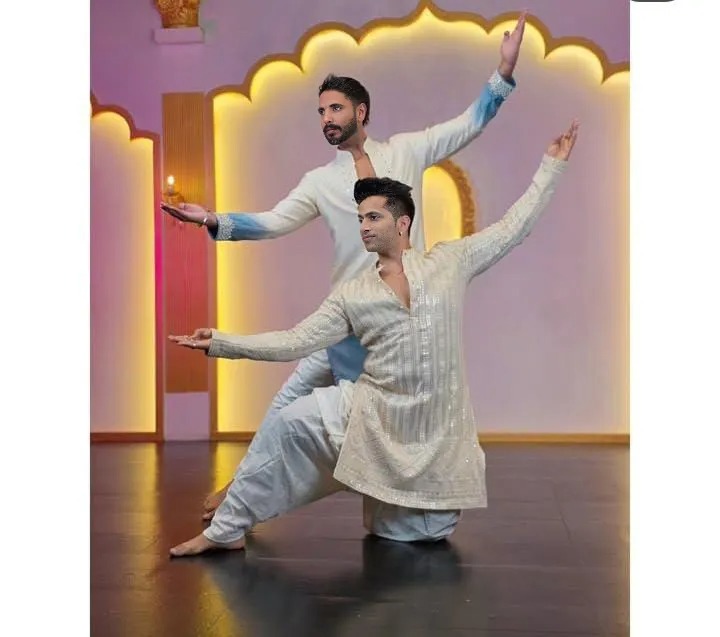Jagseer Singh Choreographer




Choreographer Jagseer Singh Brings Rhythmic Precision to Indian Cinema
Chandigarh — In an era where dance choreography in Indian cinema has evolved into a hybrid of classical grace and contemporary flair, one name making a distinct impact is Jagseer Singh. With a portfolio that spans both Punjabi and South Indian cinema, Singh has quickly become a sought-after choreographer whose work enhances not only musical sequences but also the emotional landscape of the films.
From the evocative folk rhythms of Bajre Da Sitta to the dynamic energy in Honsla Rakh and the raw intensity in Asuran, Jagseer Singh has developed a choreographic signature marked by cultural authenticity and cinematic harmony.
Crafting Emotion Through Movement
Jagseer Singh’s journey in cinema is rooted in his passion for storytelling through dance. What sets him apart is his ability to adapt choreography to suit a film’s narrative rather than relying solely on spectacle. His work is not just confined to grand dance numbers but extends to subtle background movements, wedding processions, festival scenes, and even fight sequences that require choreographic sensibility.
In the critically acclaimed Samar, Singh’s choreography supported scenes of high emotional tension. Rather than elaborate dance routines, he utilized slow, deliberate gestures and crowd formations to build visual drama. This understated approach revealed his understanding of how movement could convey mood even without music.
For Bajre Da Sitta, a film deeply rooted in Punjabi tradition, Jagseer worked closely with music directors to create dance sequences that reflected the time period and cultural nuances. Every hand gesture, every foot tap, was synchronized with the authenticity of Punjabi folk—earning praise from both critics and traditionalists.
Signature Style in Modern Hits
In commercial hits like Honsla Rakh and Jind Meriye, Singh embraced more contemporary styles, blending Bhangra with Bollywood and international dance forms. In these projects, he demonstrated his flexibility and flair for spectacle—without losing the core emotional drive of the characters.
“Honsla Rakh gave me a platform to explore upbeat choreography with a strong comic element,” Singh recalls. “The characters were vibrant and light-hearted, and I had to design sequences that matched their energy while still being rooted in Punjabi ethos.”
His choreography in Jind Meriye, particularly in the wedding and club sequences, featured clean formations, energetic footwork, and camera-friendly movement that kept viewers engaged without overwhelming the narrative flow.
Crossing Regional Boundaries
One of Jagseer Singh’s standout achievements has been his ability to move fluidly between different regional film industries. His involvement in the Tamil blockbuster Asuran showcased his talent for adapting choreography to different cultural and cinematic tones.
In Asuran, Singh designed large-scale crowd movements and celebratory scenes that required control and authenticity rather than stylized dance. The choreography seamlessly blended with the film’s raw and rustic aesthetic, contributing to the film’s immersive rural atmosphere.
Similarly, his work in Dulla the Robinhood (2025) marked his return to larger-than-life folk choreography. Set in a historical Punjabi backdrop, the film demanded traditional choreography with a heroic edge. Singh delivered sequences with strong masculine energy, often combining traditional dance steps with choreographed fight routines.
The Role in Ensemble Projects
In multi-character dramas like Manje Bistre, Singh’s challenge was to choreograph group scenes that felt spontaneous yet perfectly timed. His approach centered around building chemistry between actors and dancers, ensuring natural flow in large celebratory gatherings.
“Wedding scenes are tricky,” he explains. “They should feel joyous and unscripted, yet every beat has to be rehearsed and coordinated. My job is to make the audience believe it’s all happening in the moment.”
This attention to detail is one reason producers and directors across industries have continued to approach Singh for both lead choreography and broader movement direction, including background coordination for extras.
A Self-Made Choreographer
Jagseer Singh’s ascent in the film industry is the result of sheer perseverance. Without backing from a dance academy or a cinematic lineage, he began his career choreographing local stage shows and regional music videos. His break into film came after one of his dance reels went viral online, catching the attention of a Punjabi film director.
From there, Singh quickly became known for his adaptability, professionalism, and collaborative spirit on set. Unlike many choreographers who demand full creative control, Singh prefers to work hand-in-hand with directors, cinematographers, and costume designers to ensure choreography aligns with the film’s visual language.
Looking Ahead
As Indian cinema continues to evolve, choreographers like Jagseer Singh are playing an increasingly central role—not just in dance numbers, but in overall visual storytelling. He is currently in talks for several high-profile projects across Punjabi and Hindi film industries and has hinted at plans to direct his own musical film in the coming years.
Singh also mentors aspiring choreographers and dancers, holding workshops in Punjab and Mumbai where he emphasizes the importance of storytelling through movement. “Anyone can learn steps,” he says, “but only a few can use those steps to express a feeling, an idea, or a moment.”
In a world saturated with flashy routines and viral trends, Jagseer Singh continues to remind the industry that choreography, when done right, is not just entertaining—it is transformative.